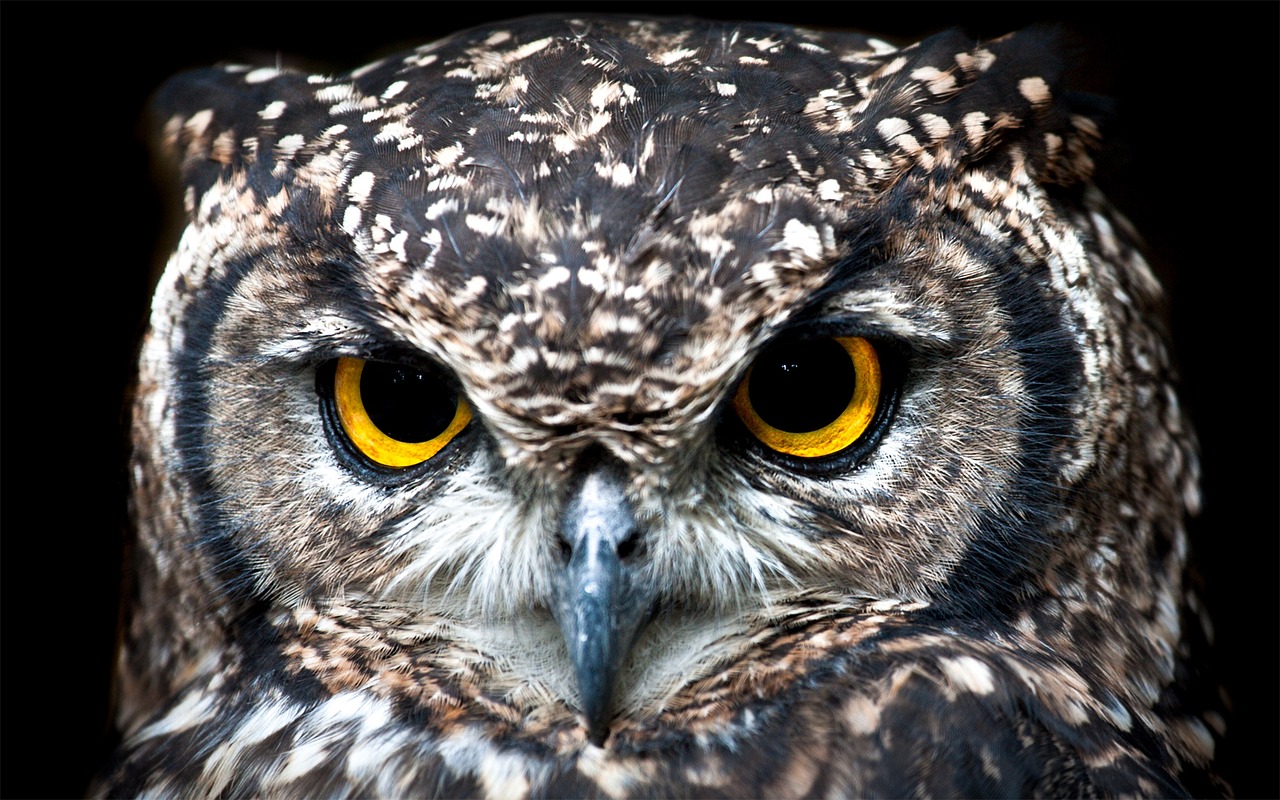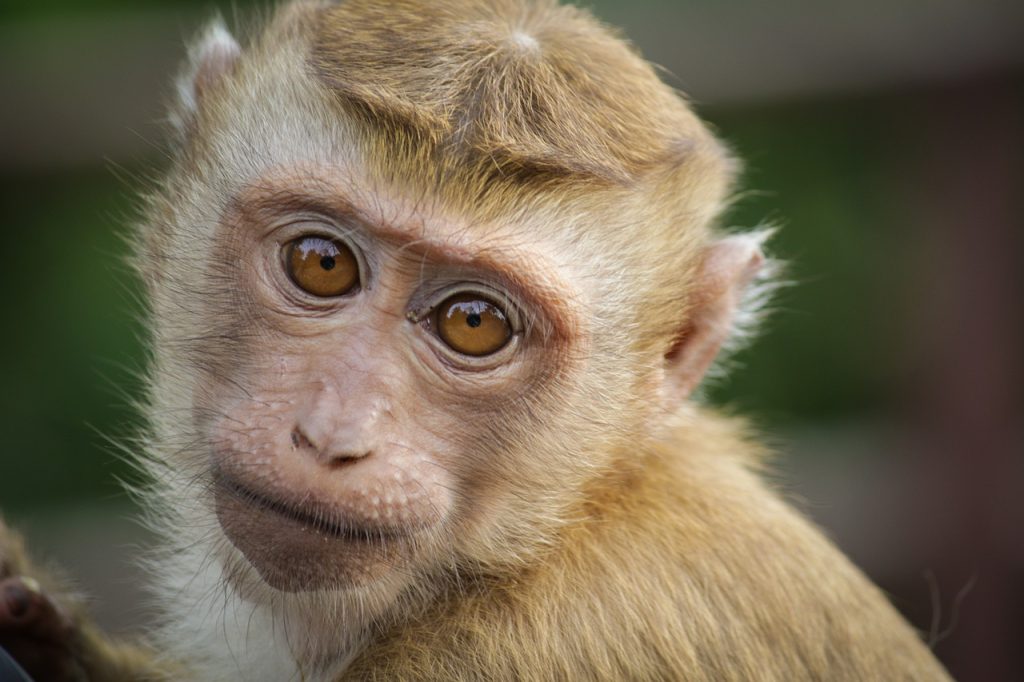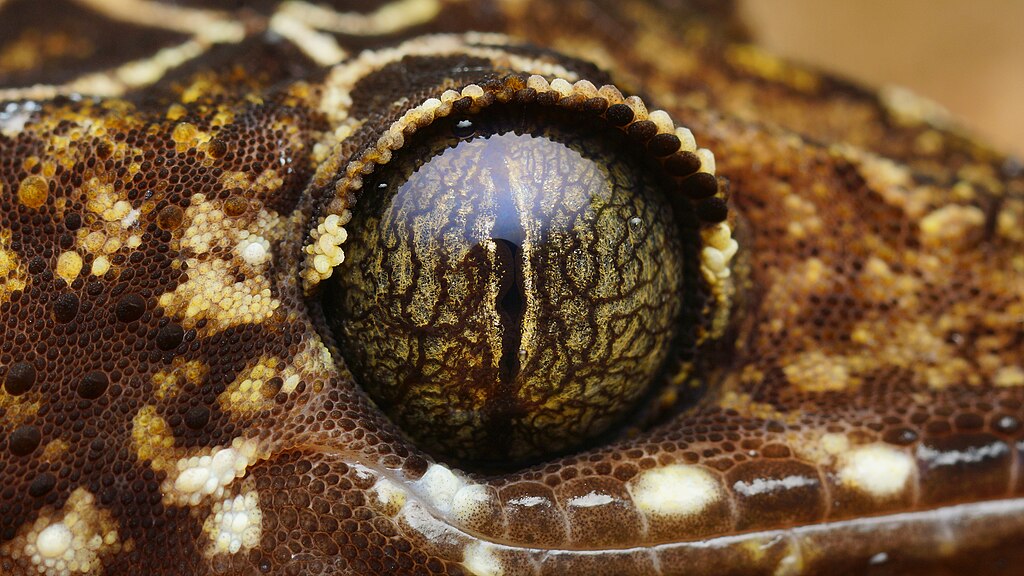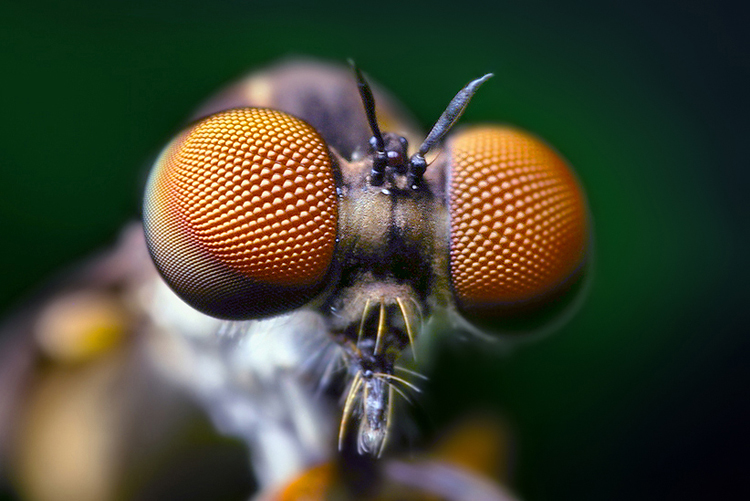How animals see colour

We humans are mammals and primates. The way we see colour is similar to many other animals. However, there is a wide range of colour vision in the animal kingdom, and many different kinds of eyes or “vision systems”. This is due to animals’ biological makeup, environment, and evolutionary history.
This page gives a short introduction to some of the weird and wonderful ways living creatures have evolved over millions of years to detect light and colour, and why it is useful to have colour vision. Studying colour vision in the animal world helps us understand visual systems and could lead to new discoveries in fields such as optics, chemistry and biology.
Topics covered on this page
Primates and other mammals

Primates mostly have good trichromatic colour vision, and humans may have the best colour vision of all primates. Most mammals have a mixture of rod and cone cells in the retina of the eye – just like humans – but the amounts of each type of light-detecting (photoreceptive) cells may differ between species. It is thought that being able to see colour is an advantage when searching for food. Being able to tell the difference between ripe (red and orange) and unripe (green) fruit on trees and plants, for example, makes it much easier to find things to eat.
Many mammals like cats, dogs, rabbits, cattle, sheep, and goats can only see a small amount of colour. These animals are mostly dichromats (they can only see two colours) and may only see pastel shades of blue and yellow. This means they have protanopia (red–green colour blindness).
Some mammals (like cats and wolves) have evolved so that their eyes contain more rods than cones, allowing them to see and hunt in the dark. It’s not much use having good colour vision in the dark (as explained in Why are things different colours? in this resource), but having lots of rods that can perceive subtle differences between light and dark is much better for detecting the movement of prey in dark environments.
Some sea mammals, like dolphins, can detect blue light very well – which is useful when underwater, but cannot differentiate between colours at all. Dolphin eye lenses can change shape to be able to see well both above and below water – they can do something called “spy-hopping”, where they raise their heads above water vertically to see their surroundings [2].
Birds, reptiles and sea creatures

Birds of prey, such as eagles and hawks, have excellent colour vision, with four types of cone cells (tetrachromacy), allowing them to see the visible spectrum plus ultraviolet light, which we humans cannot see. This ability helps these birds to locate prey from great distances. For other birds, tetrachromatic colour vision makes it easier to locate specific flowers, nectar and fruits, and is important in mating behaviours. Pigeons have five types of cone cells (pentachromacy), but owls, as nocturnal predators, have very little colour vision. Early research suggested that owls were completely colour blind, relying only on highly sensitive rod cells to detect light and dark. However, more recent studies have found that owls do have some colour vision. They have the ability to see ultraviolet at night and most likely do see some the visible spectrum during the day[3].
The gecko is a type of lizard that has a complex colour vision system, which has been the subject of many research studies. One of the most impressive features of gecko eyes is their excellent colour vision at night. Unlike many other lizards, which have only two types of cone cells (dichromacy), some gecko species have four types of cones (tetrachromacy), allowing them to perceive a wider range of colours.
Another interesting feature of gecko vision is the presence of oil droplets within the cone cells. These droplets act as filters, absorbing certain wavelengths of light and enabling a greater sensitivity to other wavelengths[4]. The exact function of these oil droplets in gecko colour vision is still not fully understood, but they are thought to play a role in improving the ability to tell the difference between colours, even in low-light environments.
Chameleons are well known for their ability to change colour, but they also have very good colour vision – possibly the best vision of all lizards. Chameleons have “double cones” and four types of single cone cells, but very few rod cells, which means they don’t see well in the dark. The cone cells also contain oil droplets like geckos. Chameleons can see a wider range of colours than humans can, including ultraviolet light, and their eyes can move and focus together or independently of each other (monocular and binocular vision). They can focus on objects at great distances because of the shape of their corneas and lenses. Chameleons (and certain other animals) also have a layer in their eyes called the tapetum lucidum, which reflects light and enhances their vision in low-light conditions.
Snakes do not have colour vision in the usual sense. They are able to distinguish between light and dark, but they cannot perceive different colours. However, some species of snakes have specialised receptors in pit organs on their faces that allow them to ‘see’ (or sense) infrared light, which helps them locate warm-blooded prey. This is not the same as photoreceptors in the eyes. However, it is a means of detecting wavelengths of electromagnetic radiation.
Octopuses and squids (cephalopod species) have good vision – although cannot detect colour. Their eyes are more similar to those of humans and other vertebrates than those of most other invertebrates, with a single lens and a retina that contains photoreceptor cells. However, the way these photoreceptor cells function in cephalopods is quite different from that of humans and other vertebrates. They also have a unique type of photoreceptor cell called a rhabdom that helps to detect polarised light, which is important for things like communication, navigation, and camouflage. If you’re wondering how colour changing octopus can detect colour in its surroundings to camouflage itself without seeing colour with its eyes, see this page: Colour chemistry 1: animals that can change colour (hint: they have special cells in their skin that can produce colour to mimic their environment)
In fish, the number and distribution of cone cells for colour vision vary depending on the species and the environment in which they live. For example, fish that live in shallow water with a lot of sunlight tend to have more cone cells than those that live in deeper water with less light. Some fish also have rhabdom cells that allow them to see polarised light, which they use for navigation and communication.
Crustaceans have a more complex visual system than fish, with a wider range of visual pigments and photoreceptor cells. Some crustaceans, like the mantis shrimp, also have a type of compound eye (like insects) called an apposition eye, which allows them to have high spatial resolution and sensitivity to small changes in light intensity. Mantis shrimp also have 12 types of cones – although these cones only show very narrow bands of light wavelengths, so they don’t see more colours than we do. Like fish and cephalopods, crustaceans also have rhabdom cells that allow them to see polarised light, and are also used for navigation and communication.
Insects, arachnids and other creepy crawlies

Insects and arachnids have evolved to have different types of colour vision. Insects, for example, have trichromatic colour vision, which allows them to see three primary colours: ultraviolet, blue, and green. In contrast, arachnids, such as spiders and scorpions, generally have dichromatic colour vision, which allows them to see two primary colours: blue and green – although there are exceptions to this.
Insects usually have compound eyes, which are made up of many tiny lenses called ommatidia. Some insects can have over 20,000 ommatidia in each compound eye, which can give them an almost 360-degree range of vision. Each ommatidium contains a single photoreceptor, and the brain processes the signals from many ommatidia to create an image. Most insects can see ultraviolet light, which is used to detect nectar and pollen and is also used in mating behaviours. For example, bumblebees are trichromats, like humans, but the light wavelengths their photoreceptors detect are in a different range to ours – closer to ultraviolet light.
Most spiders have eight eyes, and each eye has a single photoreceptor. Some spiders can only detect light, but cannot see in colour. However, some species of jumping spiders have excellent colour vision, with four types of photoreceptors (tetrachromacy).
It is thought that some species of butterflies have the most photosensitive receptors of all insects.
The exact anatomy and systems of colour vision in many different kinds of animals are still being studied. There is much that is not yet fully understood. We can study the anatomy of different eyes and how they detect light and colour, but we don’t exactly know how each animal’s brain interprets the information from photoreceptor cells like rods and cones.
The research to date has provided valuable insights into the evolution and function of colour vision in these animals. You can find out more about how different animals see colour by starting your own research online. You can visit the links on this page or search online or at the library to find books, journal articles and videos on this topic.
Further reading on colour vision in animals
Color Matters – How animals see color
Wikipedia – Evolution of color vision
Ask A Biologist – Colors animals see
Cosmos Magazine – The incredible and bizarre spectrum of animal colour vision
Queensland Brain Institute – Colour vision in animals: a comprehensive overview
Natural History Museum UK, How do other animals see the world?
Natural History Museum UK, Amazing eyes: 17 vision champions
Gerl, E.J. and Morris, M.R. The Causes and Consequences of Color Vision. Evo Edu Outreach 1, 476–486 (2008). https://doi.org/10.1007/s12052-008-0088-x, accessed 12/01/2023
Kelber A. and Osorio D. 2010, From spectral information to animal colour vision: experiments and concepts, Proceedings of the Royal Society B., Biological Sciences, 277: pp.1617–1625 DOI:http://doi.org/10.1098/rspb.2009.2118, accessed 12/01/2023
- Gerl, E.J. and Morris, M.R. The Causes and Consequences of Color Vision. Evo Edu Outreach 1, 476–486 (2008). https://doi.org/10.1007/s12052-008-0088-x, accessed 12/01/2023 ↵
- Scoggins, J. 2016, "Colour and Vision in Dolphins", Sea Watch Foundation, <https://www.seawatchfoundation.org.uk/colour-and-vision-in-dolphins/>, accessed 12/01/2023 ↵
- Höglund J., Mitkus M., Olsson P., Lind O., et al (2019), 'Owls lack UV-sensitive cone opsin and red oil droplets, but see UV light at night: Retinal transcriptomes and ocular media transmittance', Vision Research, Vol 158, Pages 109-119, https://doi.org/10.1016/j.visres.2019.02.005. (https://www.sciencedirect.com/science/article/pii/S0042698919300471), accessed 12/01/2023 ↵
- Bowmaker, James & Loew, Ellis & Ott, Matthias. (2005). The cone photoreceptors and visual pigments of chameleons. Journal of comparative physiology. A, Neuroethology, sensory, neural, and behavioral physiology. 191. 925-32. https://doi.org/10.1007/s00359-005-0014-4., accessed 12/01/2023 ↵
- Smith, B. 2016 "The spectrum of animal colour vision", Cosmos Magazine, <https://cosmosmagazine.com/science/biology/the-incredible-and-bizarre-spectrum-of-animal-colour-vision/> viewed 12/01/2023 ↵
Rods are cells in the eye's retina that respond to low-intensity light and help us to see low-resolution, black-and-white images - it's why we can still see things in very low light. Animals that can see in the dark have more rod cells than humans do.
Cones are cells in the eye's retina that respond to high-intensity light and enable us to see high-resolution, coloured images. Humans have three types of cone cells, but other animals may have two, four or other numbers of cone cell types.
Dichromacy (di means two) is where only two types of cone cells exist in the eye retinal area. Dichromats may not perceive parts of the visible spectrum that trichromats (three types of cones) or tetrachromats (four types of cones) can see.
The tapetum lucidum is a biologic reflector system that is a common feature in the eyes of vertebrates. It normally functions to provide light-sensitive retinal cells with a second opportunity for photon-photoreceptor stimulation, thereby enhancing visual sensitivity at low-light levels.[1]
Vipers, pythons and boas have holes on their faces called pit organs, which contain a membrane that can detect infrared radiation from warm bodies up to one metre away. At night, the pit organs allow snakes to 'see' an image of their predator or prey — as an infrared camera does — giving them a unique extra sense.[2]

